The Art Detective
Revealed: The Biggest Consignors to the $2.9 Billion Fall Auctions in New York, From a Greek Shipping Family to a Storied Art Dealer
Here's who's selling what.
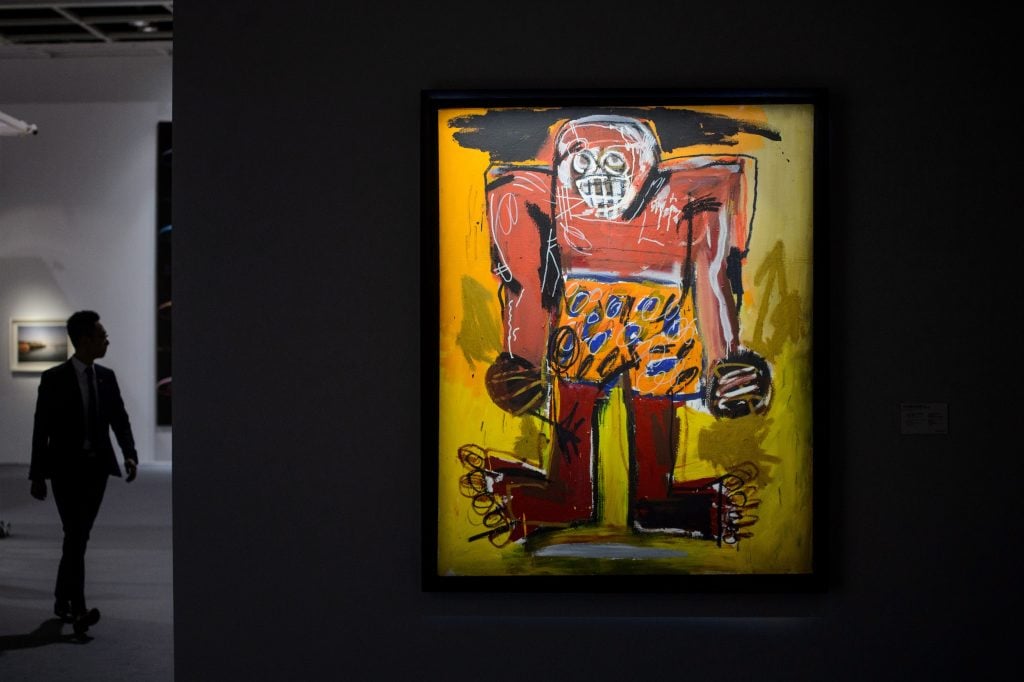
Here's who's selling what.

Katya Kazakina

The Art Detective is a weekly column by Katya Kazakina for Artnet News Pro that lifts the curtain on what’s really going on in the art market.
I am still breathless after the Paul Allen auction at Christie’s this week: $1.5 billion in less than three hours (and another $116 million during the day sale). There’s no question the late Microsoft cofounder was the biggest seller of this auction season (or any auction season, for that matter).
This may bode well for other sellers at New York’s big semi-annual auctions. At least $1.3 billion more is up for grabs next week during the sales of 20th and 21st century art at Christie’s, Sotheby’s, and Phillips.
The named consignors at Sotheby’s include the estate of attorney David Solinger and the family of Willem de Kooning, which consigned three superb paintings by the AbEx master.
At Christie’s, the Agnes Gund Foundation is parting with a Lichtenstein to raise money for reproductive rights; the heirs of Viennese cabaret and film star Fritz Grünbaum are selling Egon Schiele’s works on paper following a restitution earlier this year; and nonagenarian energy executive Roger Sant is selling paintings by Gauguin and Joan Mitchell as part of a 30-lot trove across categories. The house will also offer more art from the Thomas and Doris Ammann collection following last May’s success and several works donated by artists including Rashid Johnson and Mickalene Thomas to support the Right of Return Fellowship, a charity that supports formerly incarcerated artists and creatives.
Museums are in the mix, too: The Jewish Museum in New York is selling a Miró sculpture at Christie’s to benefit acquisitions. Sotheby’s won 29 works from the William S. Paley Foundation that had been on long-term loan to the Museum of Modern Art in New York and are now being sold to support acquisitions and tech initiatives at the museum. A Gerhard Richter painting, which was a partial gift to Carnegie Museum of Art by benefactors Karl and Jennifer Salatka, is being sold for the museum’s acquisition fund.
These are the exceptions, however: most sellers aren’t named. I sussed out some of the biggest consignors to the week’s auctions who might otherwise have flown under the radar. None of the sellers responded to a request for comment by press time.

Gustave Caillebotte, Les Jardiniers (ca. 1877). Courtesy of Christie’s Images, Ltd.
The founder and CEO of Marsico Capital Management LLC, an investment and advisory firm in Denver, Colorado, is the seller of at least eight Impressionist lots at Christie’s 20th century evening sale. The group, which is guaranteed by the house, is designated as “Property from an Important American Collection.” It includes paintings by Monet and Manet. The lots have a combined low presale estimate of $31.5 million. A pastel by Degas, a landscape by Matisse, and Caillebotte’s Les Jardiniers were acquired through Acquavella Galleries in the early 2000s. A sumptuous floral still life by Frédéric Bazille is estimated at $5 million to $7 million. Marsico bought it at Sotheby’s for $5.3 million in 2004. It’s still the auction record for the first-generation Impressionist, who died at 28 during the Franco-Prussian War in 1870. You may recall that Marsico was the anonymous seller of Monet’s grain stack, which fetched $81.4 million at Christie’s in 2016, then an auction record for the artist.
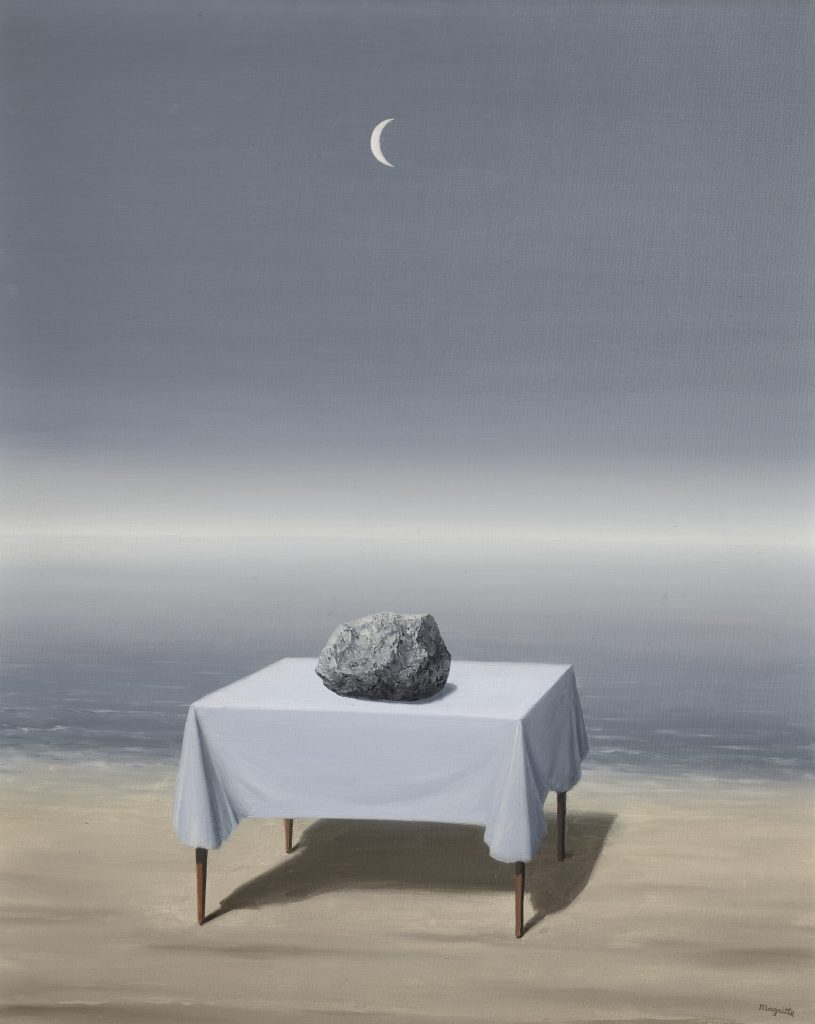
Rene Magritte, Le monde visible (1962). Courtesy of Christie’s Images, Ltd.
The source of at least six lots in the same Christie’s evening sale is designated as “The Artistic Journey – A Distinguished West Coast Collection.” That collection was amassed by Jim Douglas, the late patron of the San Francisco Museum of Modern Art, who died last year at the age of 89.
The works include Rene Magritte’s Le Monde Visible (1962), estimated at $7 million to $10 million, which he acquired for $2.2 million at Sotheby’s in 2005. Picasso’s Fillette aux nattes et au chapeau vert (1956) is estimated at $4 million to $6 million. Douglas bought it for $5.9 million at Sotheby’s in 2011.
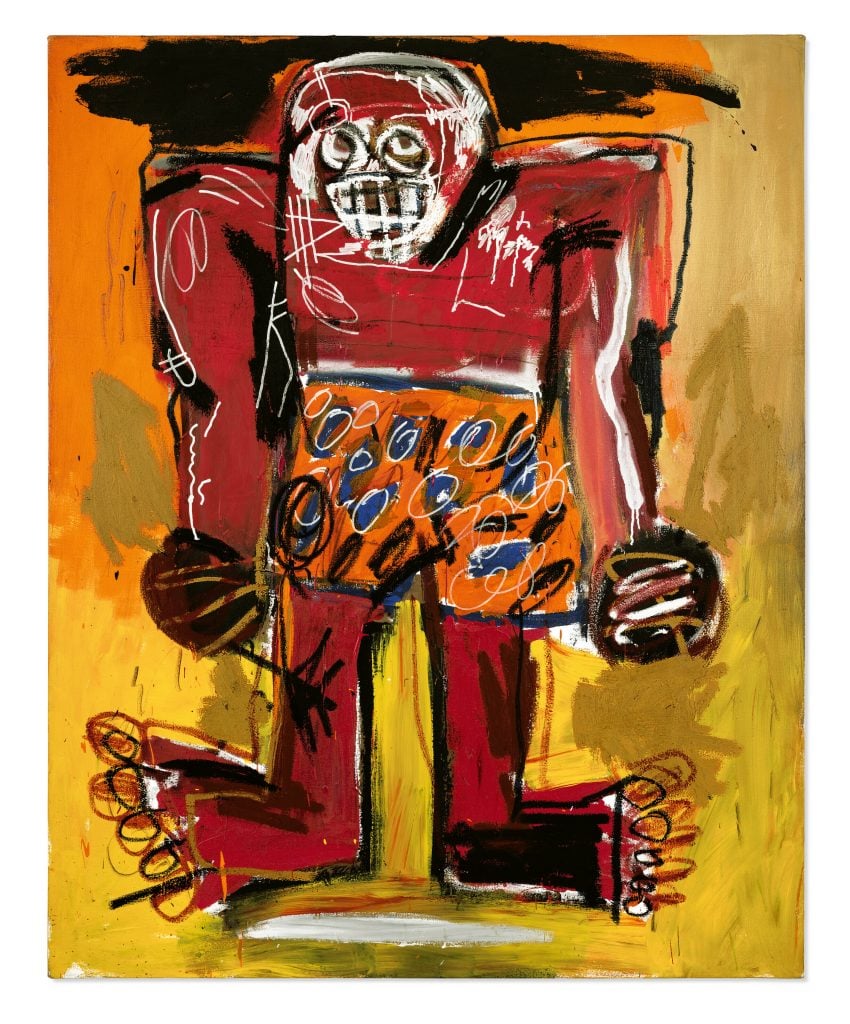
Jean-Michel Basquiat, Sugar Ray Robinson (1982). Courtesy of Christie’s Images, Ltd.
Jean-Michel Basquiat’s Sugar Ray Robinson made the news in 2016 when Christie’s departing rainmaker Brett Gorvy told me he sold the work for $24 million after posting its photo on Instagram—one of the first high-value art-market transactions on social media. (The 1982 work depicting the boxing champion had sold for $7.3 million at auction in 2007 to billionaire jeweler Laurence Graff.) The name of Gorvy’s client remained a secret then, but the Art Detective has since learned that it was Lorenzo Fertitta, the Las Vegas-based billionaire with a passion for Basquiat (he bought another major work by the artist in late 2019). Last year, Sugar Ray Robinson was included in “Leather Throwers,” an exhibition at the Bellagio Gallery of Fine Art in Las Vegas, according to Christie’s provenance. The auction house estimated the work in the region of $35 million.

Charlene von Heyl, Crash Course (Atalante) (2016). Courtesy of Sotheby’s.
The president and chief executive officer of tech company Telus and his wife continue to deaccession at Sotheby’s. The couple was identified by the Art Detective as the sellers of a record Charlene von Heyl last month in London. This time around, they are parting with Von Heyl’s Crash Course (Atalante), estimated at $250,000 to $350,000. The couple is also selling Carol Bove’s blue stainless steel sculpture Dressing Room (2017), estimated at $400,000 to $600,000 and originally acquired from David Zwirner.
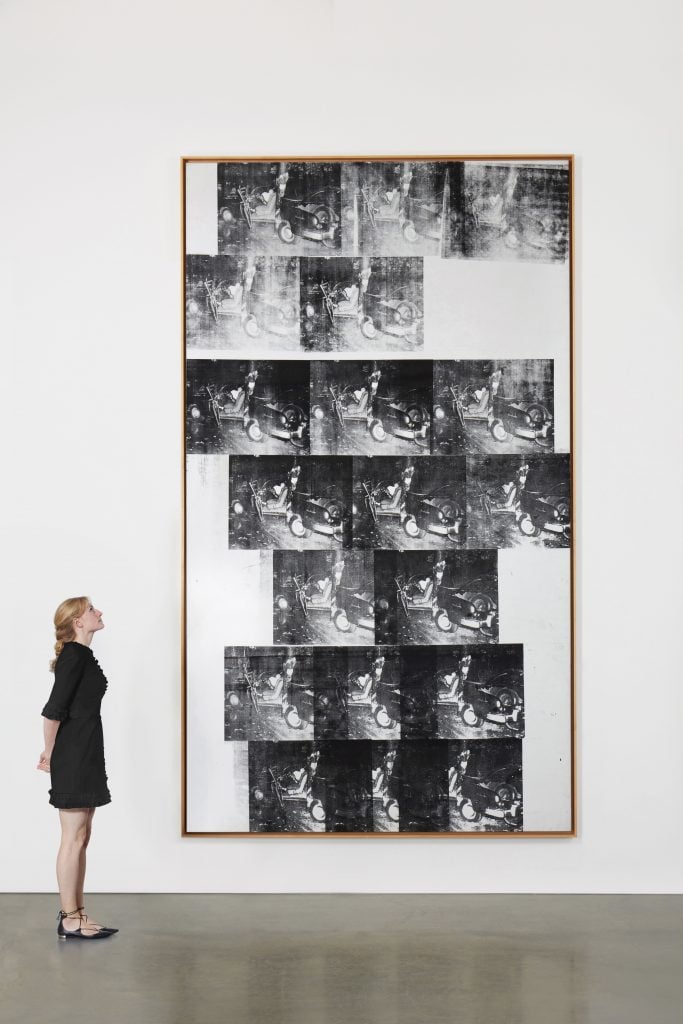
Andy Warhol, White Disaster (White Car Crash 19 Times) (1963). Courtesy of Sotheby’s.
The biggest Warhol of the season, White Disaster [White Car Crash 19 Times], is 12 feet tall and estimated at $80 million. A late arrival to the November lineup, the 1963 silkscreen is shrouded in mystery. The current owner bought it through Thomas Ammann Fine Art AG in 1996. Some market-watchers have linked the piece to the Martinos shipping family, which is known for their Warhol holdings and close ties to Doris Ammann. The work has been included in museum exhibitions such as the 1998–2000 Guggenheim survey “Andy Warhol: A Factory” and the Art Gallery of Ontario’s show of Warhol’s death and disaster series in 2005–6. It doesn’t have a guarantee, which usually indicates that the seller has negotiated an “enhanced hammer” deal, pocketing part of the auction house’s commission.
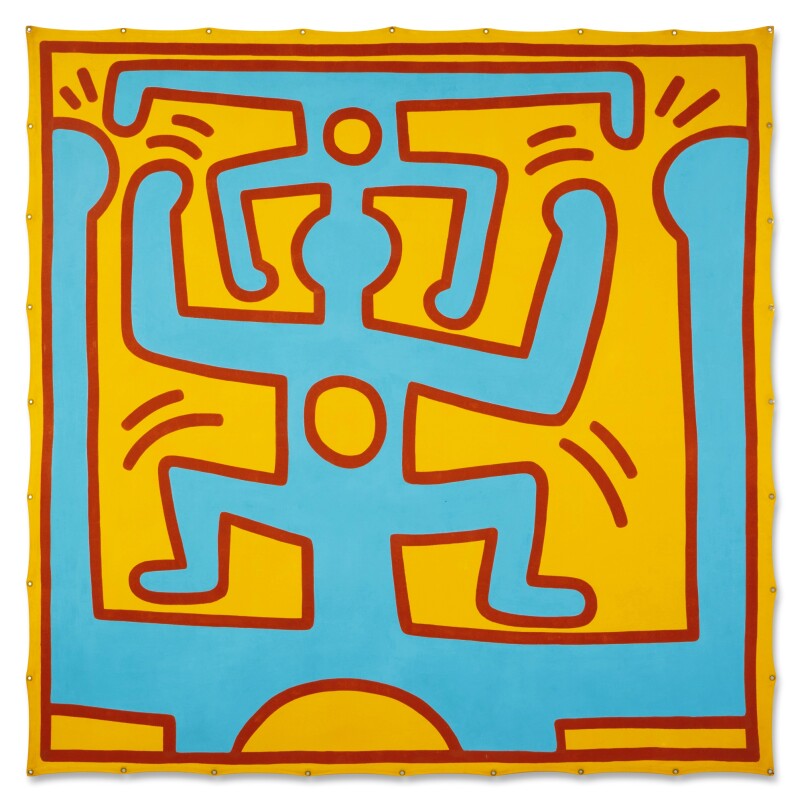
Keith Haring, Untitled (1987). Courtesy of Sotheby’s.
Art dealer Tony Shafrazi is selling works by Basquiat, Keith Haring, and Christopher Wool. All three are guaranteed and backed by irrevocable bids. Haring’s untitled 1987 work—a burst of yellow and blue—is estimated at $3 million to $4 million. Shafrazi bought it in 1995. Basquiat’s untitled white-on-black silkscreen on canvas comes in an edition of 10 with two artist proofs; it’s estimated at $2.5 million to $3.5 million. The same estimate is assigned to Wool’s untitled abstract black-on-white silkscreen from 2000.